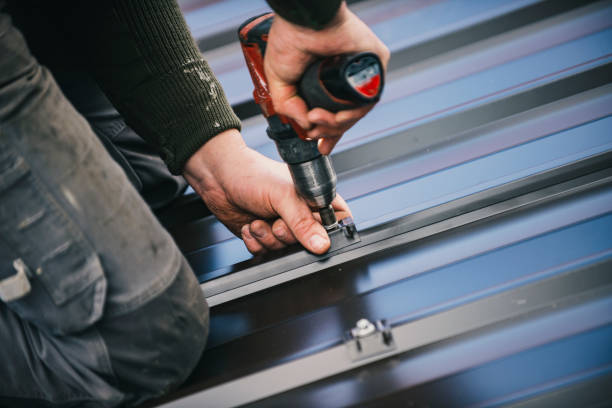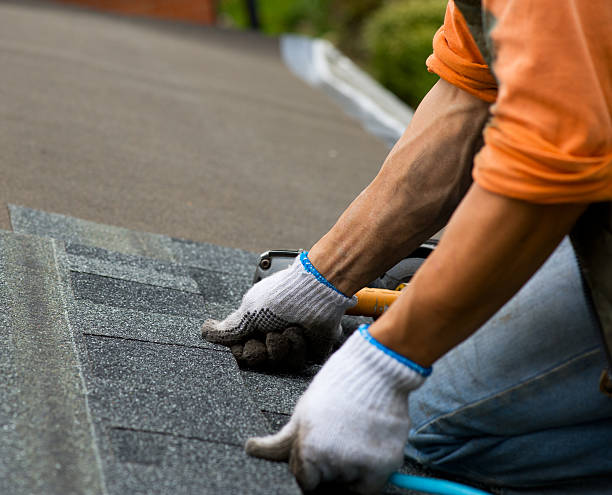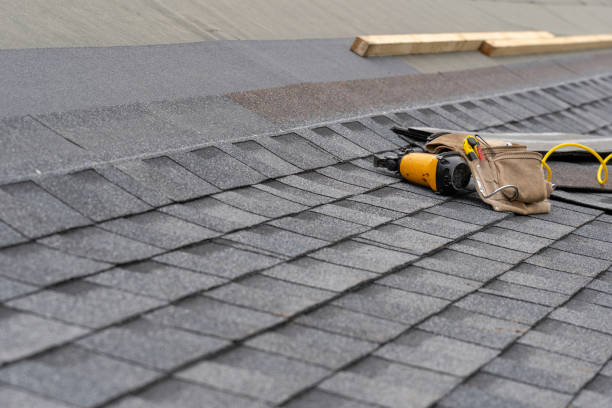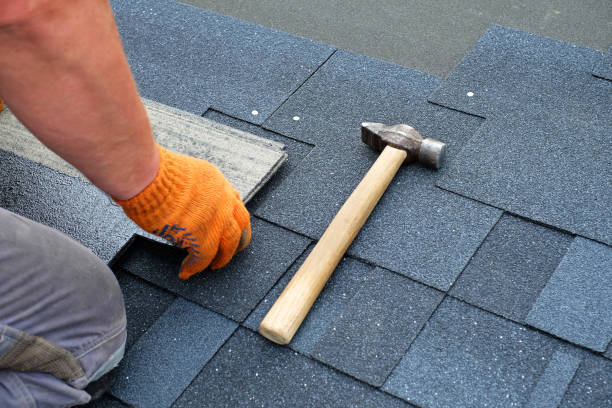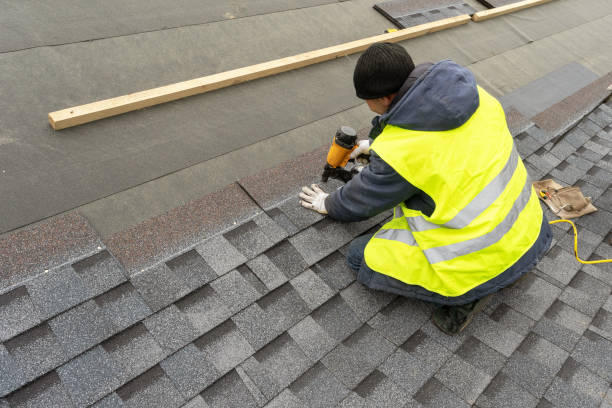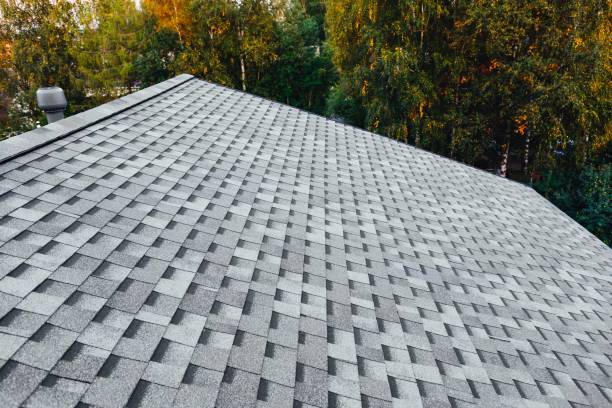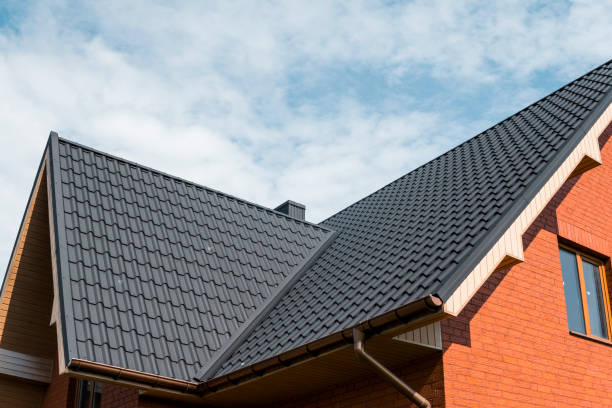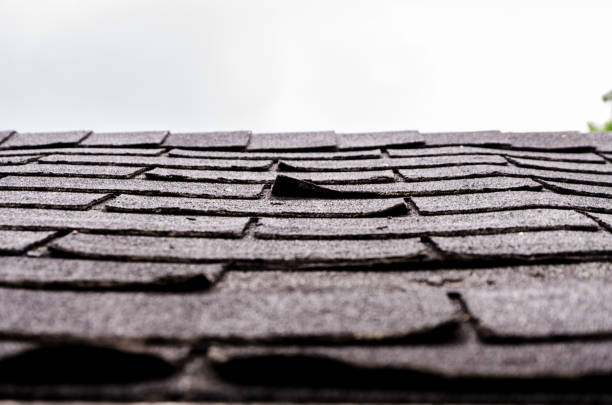15 Steps to Choosing the Right Manchester NH Roofing Contractor for Your Home
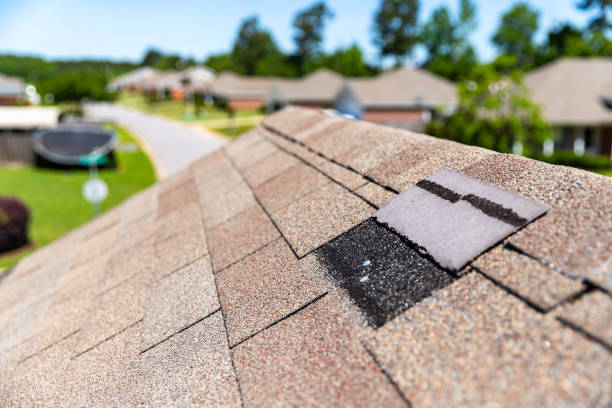
Selecting the right roofing contractor is a critical decision that can impact the safety, appearance, and longevity of your home. With so many options available, homeowners often struggle to make an informed choice. Below are 15 practical steps to guide you through this process.
1. Define Your Roofing Needs
Before reaching out to contractors, determine what kind of roofing work your home requires:
– Repair: Fixing leaks or damage on an existing roof.
– Replacement: Removing the old roof and installing a new one.
– Installation: Building a roof for new construction.
Having clarity on your needs will ensure you hire a contractor with the right expertise.
2. Research Local Contractors
Look for local roofing contractors in your area to ensure faster service and familiarity with local building codes or weather challenges.
Tools to use:
– Online directories like Better Business Bureau (BBB).
– Recommendations from friends or neighbors.
3. Verify Licensing and Insurance
Ensure that the contractor holds valid licenses specific to your state or region and has active insurance coverage. Key documents to request include:
| Document Type | What It Ensures |
|———————–|——————————————————————-|
| Business License | Legitimacy and adherence to legal requirements |
| General Liability Insurance | Coverage in case of property damage during the project |
| Workers’ Compensation | Protection for workers injured on-site |
4. Check Credentials and Certifications
Some contractors may have additional certifications from manufacturers or industry associations, such as being certified installers for specific roofing brands.
Examples include:
– GAF Master Elite Certification
– Owens Corning Preferred Contractor Status
These credentials indicate higher standards of training and expertise.
5. Review Past Work Portfolios
Ask contractors for photos or descriptions of past projects similar to yours. High-quality portfolios often reflect consistent performance over time.
6. Read Online Reviews and Testimonials
Use reviews on platforms like Google, Yelp, or Angie’s List to gauge customer satisfaction levels.
Look out for patterns in feedback such as:
– Promptness in handling issues
– Quality of materials used
– Professionalism throughout the project
7. Ask About Warranties
Not all warranties are created equal—ensure you understand what is covered under both manufacturer warranties (materials) and workmanship warranties (labor quality).
Key questions include:
1) How long does each warranty last?
2) Are there exclusions?
3) Is warranty transfer available if I sell my home?
8. Get Multiple Estimates
Request quotes from at least three contractors so you can compare pricing structures transparently without compromising quality.
Ensure estimates break down costs clearly for:
– Labor
– Materials
– Permits
9. Meet in Person
Arrange a meeting to discuss specifics about your project face-to-face with shortlisted candidates.
Tips during this step: – Assess their communication skills. – Evaluate their willingness to answer detailed questions.
10. Confirm Compliance With Building Codes
Your chosen contractor should know all local regulations regarding roof construction permits and inspections required by authorities before starting work.
11. Understand Project Timelines
Discuss estimated start times along with expected completion dates while accounting realistically for potential weather delays.
Questions you might ask include: 1) How many people will be working on-site? 2) Will cleanup occur daily?
12. Ask About Safety Protocols
Safety matters not just for workers but also residents nearby during active roofing projects.
Check whether companies follow Occupational Safety & Health Administration(OSHA)—recommended practices around fall prevention etc—
Understanding Roof Warranties with a Roofing Contractor Manchester NH: Manufacturer vs. Workmanship Coverage
When investing in a new roof, understanding the warranties that come with it is crucial. Roof warranties can safeguard homeowners from unexpected costs related to repairs or replacements, but not all warranties are created equal. Two main types of warranties are commonly offered—manufacturer warranties and workmanship warranties. Understanding their differences and coverage can help homeowners make informed decisions.
What is a Manufacturer Warranty?
A manufacturer warranty is provided by the company that produces the roofing materials. This type of warranty typically covers defects in the materials themselves, ensuring that the products are free of manufacturing flaws.
Key Features of Manufacturer Warranties: – Material Defects: Covers issues like shingles that curl prematurely, excessive granule loss, or tile cracking due to manufacturing flaws. – Coverage Period: Often ranges from 20 years to lifetime, depending on the material and brand. – Exclusions: Does not cover damage caused by improper installation or external factors (e.g., weather events).
| Pros | Cons |
| Long coverage periods (sometimes lifetime) | Limited to material defects |
| Protects against premature failures | Excludes installation-related issues |
What is a Workmanship Warranty?
A workmanship warranty is provided by the roofing contractor and covers errors made during installation. While this warranty doesn’t address material defects, it focuses on issues caused by improper workmanship.
Key Features of Workmanship Warranties: – Installation Issues: Protects against problems such as leaks due to poorly applied underlayment or misaligned shingles. – Shorter Terms: Often valid for 1–10 years, depending on the contractor. – Contractor-Specific: Only valid if issued by the roofer who performed the installation.
| Pros | Cons |
| Addresses installation-related problems | Shorter duration compared to manufacturer warranties |
| Adds accountability for contractors | Not transferable in many cases |
Key Differences Between Manufacturer and Workmanship Warranties
- Manufacturer warranties deal with materials.
- Workmanship warranties handle errors in installation.
- Manufacturer warranties often last longer (up to lifetime).
- Workmanship guarantees are typically shorter-term.
- Manufacturers stand behind their product quality.
- Contractors take responsibility for labor and fitting accuracy.
Questions to Ask About Roof Warranties
- Does your company offer both manufacturer and workmanship warranties?
- What specific aspects are covered under each type of warranty?
- Are there any circumstances where a warranty could be voided?
- Can I transfer my warranty if I sell my home?
- How will claims be handled if an issue arises?
Tips for Maximizing Warranty Benefits
- Choose products from reputable manufacturers known for strong guarantees.
- Hire experienced roofing contractors who back their work with solid workmanship assurances.
- Keep documentation of all contracts and receipts for future reference.
- Perform regular maintenance as recommended; neglecting upkeep could void your warranty.
Understanding roof warranties empowers homeowners to protect their investment while ensuring long-term peace of mind through comprehensive coverage options tailored to their needs.
Understanding Roof Warranties with a Trusted Roofer Manchester NH
When investing in a new roof, understanding the warranties associated with it is crucial. Roof warranties provide homeowners with peace of mind by protecting against unexpected issues or damages. However, not all warranties are created equal. It’s essential to understand the two main types of roof warranties: manufacturer warranties and workmanship warranties. Here’s an in-depth look at how they differ and what to consider when comparing them.
Manufacturer Warranties
Manufacturer warranties cover defects related to roofing materials. These are offered by the company that produces the shingles, tiles, or other roofing materials used for your home.
- Coverage Scope:
Manufacturer warranties specifically cover material defects that may result in failure or poor performance under normal conditions. For example: - Cracked or curling shingles
- Premature wear due to defective materials
- Types of Manufacturer Warranties:
There are two common types: - Basic Warranty: Covers materials for a set duration (e.g., 10–30 years).
- Extended or Lifetime Warranty: Often available at an additional cost and provides longer-term coverage.
- Exclusions:
These warranties typically do not cover improper installation, extreme weather damage (unless specified), or routine wear and tear.
| Feature | Basic Warranty | Extended Warranty |
| Coverage Length | Shorter (10–30 years) | Longer (lifetime, in some cases) |
| Cost | Usually included | Additional fee required |
| Material Defects Covered | Yes | Yes |
Workmanship Warranties
Workmanship warranties address issues caused by improper installation rather than material defects. These are provided by the contractor who installs your roof.
- Coverage Scope:
Common issues covered include: - Leaks caused by poor installation practices
- Incorrect flashing placement
- Problems due to inadequate underlayment
- Duration of Coverage:
The length of workmanship warranties varies widely depending on the contractor’s policies. Some may offer coverage for just one year, while others might provide protection for up to a decade or more. - Key Considerations: Ensure the contractor clearly outlines what their workmanship warranty includes and excludes before committing.
Key Differences Between Manufacturer and Workmanship Warranties
| Aspect | Manufacturer Warranty | Workmanship Warranty |
| Covers Material Defects | Yes | No |
| Covers Installation Errors | No | Yes |
| Provider | Roofing material manufacturer | Roofing contractor |
Tips for Evaluating Roof Warranties
- Ask Detailed Questions: Clarify what each warranty covers, its duration, and any limitations or exclusions.
- Check Transferability: Look into whether you can transfer the warranty if you sell your home.
- Read the Fine Print: Pay attention to maintenance requirements as failing to follow them could void your coverage.
- Choose Reputable Contractors: A strong workmanship warranty often indicates confidence in their skills.
- Consider Combined Protection: Aim for both robust manufacturer and workmanship warranties from trusted providers.
Properly evaluating roof warranties ensures better long-term protection for your home’s most critical structure—its roof. Always prioritize quality over cost when selecting contractors and materials to avoid unnecessary risks down the line.
The Importance of High-Quality Roof Materials for Roof Installation Manchester NH
When it comes to roofing, selecting high-quality materials is one of the most critical decisions homeowners can make. The long-term performance, safety, and overall value of your roof heavily depend on the materials used during installation or replacement. Here’s why investing in premium roofing materials is essential for your home.
Durability and Longevity
- Asphalt shingles: Standard-grade shingles last around 15–20 years, whereas high-quality options can last up to 30+ years.
- Metal roofing: Premium metal roofs can endure for 40–70 years with proper maintenance.
- Slate roofs: Known for their incredible lifespan, slate roofs can last over 100 years when sourced from top-tier manufacturers.
Opting for durable materials means fewer replacements, saving you money in the long run.
Enhanced Energy Efficiency
- Cool roofs: Materials like reflective shingles or coated metal deflect sunlight and reduce heat absorption.
- Insulated roofing panels: These provide better thermal insulation, keeping your home comfortable year-round.
Investing in energy-efficient materials also aligns with eco-friendly practices by reducing your home’s carbon footprint.
Improved Aesthetic Appeal
| Material | Aesthetic Features | Variety Available |
| Asphalt Shingles | Wide color range; textured finishes | High |
| Metal Roofing | Sleek designs; modern or traditional | Medium |
| Slate Tiles | Natural stone look; timeless elegance | Medium |
| Clay Tiles | Earthy tones; Mediterranean appeal | Low |
Choosing high-grade options ensures that your roof remains visually appealing even after years of exposure to the elements.
Better Protection Against Weather Elements
- Impact-resistant shingles protect against hail damage.
- Metal roofs are excellent at shedding snow quickly to prevent ice dams.
- Clay tiles resist UV damage in hot climates due to their natural heat-reflective properties.
This added protection safeguards not only the roof itself but also the interior structure of your home.
Warranty Benefits
Premium roofing products often come with more comprehensive manufacturer warranties compared to lower-grade alternatives. Some warranties extend up to 50 years or more, covering defects in material quality as well as performance issues under normal use conditions. This peace of mind is invaluable when protecting such a significant investment.
Key Considerations for Roof Replacements Manchester NH
- Determine the climate challenges specific to your region.
- Evaluate material compatibility with your home’s architecture.
- Balance upfront costs vs long-term savings (e.g., durability vs maintenance expenses).
- Consult professional roofers who specialize in installing premium options.
By prioritizing quality over cost when selecting roofing materials, homeowners can ensure longevity, efficiency, and enhanced value for their property—making this choice a worthwhile investment for years to come.
How to Evaluate a Roofer’s Reputation and Credentials Before Hiring
Selecting the right roofer for your home is a critical decision that impacts the durability, appearance, and overall quality of your roof. Evaluating a roofer’s reputation and credentials ensures you choose a professional with the skills, experience, and reliability needed to complete the job successfully. Here are some key steps homeowners can follow to thoroughly assess roofing contractors before hiring.
Research Online Reviews and Ratings
Start by researching online reviews on trusted platforms such as: – Google Reviews: Offers detailed feedback from previous customers. – Better Business Bureau (BBB): Check for accreditation and customer complaints. – Yelp or Angie’s List: Provides insights into customer satisfaction and service quality.
When reading reviews, look for patterns rather than focusing on isolated negative comments. A consistent track record of positive feedback is a strong indicator of reputable service.
Verify Licensing and Insurance
To protect yourself as a homeowner, ensure any roofer you consider hiring has: 1. Proper Licensing: Confirm that they meet local or state licensing requirements. 2. Insurance Coverage: Verify both liability insurance (to cover property damage) and workers’ compensation insurance (to protect against accidents on the job).
You can request copies of their license and insurance certificates to confirm their validity.
Check References
Reputable roofers should have no issue providing references from previous clients. Contact these references to ask about their experience with the contractor by asking questions like: – Was the project completed on time? – Was communication clear throughout the process? – Were there any unexpected costs or issues?
Speaking directly to past clients gives you firsthand insights into what you can expect.
Assess Professional Affiliations
Membership in professional organizations can signal credibility and commitment to industry standards. Look for contractors affiliated with groups such as: – National Roofing Contractors Association (NRCA) – Local trade associations or unions
These affiliations often require members to adhere to specific codes of ethics and demonstrate continued education in roofing practices.
Review Portfolio of Past Work
Take time to review the contractor’s portfolio of completed projects. Many roofers showcase their work on websites or social media platforms, while others may provide photo galleries upon request. Pay attention to: – The variety of roofing materials used – Before-and-after comparisons – Attention to detail in installation
A solid portfolio reflects their ability to deliver quality results across different styles of roofs.
Ask About Manufacturer Certifications
Some roofers earn certifications from manufacturers after specialized training in using specific roofing products. These certifications often indicate expertise in installing premium materials correctly according to warranty guidelines.
Examples include titles such as: | Certification Level | Manufacturer Example | Benefits | |————————————|——————————|————————————————————————-| | GAF Master Elite Contractor | GAF | Access to enhanced warranties; proven excellence in installation | | Owens Corning Preferred Contractor | Owens Corning | Training completion; reliable use of Owens Corning products |
A certified contractor may also offer better warranty options than non-certified ones.
Evaluate Communication Skills
Effective communication is essential during any roofing project. During your initial interactions with potential contractors, observe whether they: – Respond promptly to inquiries. – Provide clear explanations about pricing, timelines, materials, and processes. – Seem transparent about potential challenges or unforeseen complications.
Contractors who communicate openly are more likely to foster trust throughout the project.
By carefully evaluating a roofer’s reputation and credentials through research, verification, references, certifications, portfolios, and communication assessments, homeowners can make confident decisions when choosing professionals for their roof repair or replacement needs.
Key Questions to Ask Roofing Contractors About Project Timelines and Expectations
When hiring a roofing contractor, it’s essential to ensure that both parties are aligned when it comes to timelines, expectations, and the overall scope of work. Asking the right questions can help avoid misunderstandings and ensure a smooth process. Below are some critical areas to address when discussing project timelines and expectations with potential roofing contractors.
Questions About Project Timelines
- What is the estimated start date for the project?
Understanding when the contractor can begin work on your roof is pivotal. Some companies may have delays due to high demand or weather conditions. Confirming this helps you align their availability with your needs. - How long will the project take to complete?
A timeline estimate allows you to plan accordingly, particularly if roof access affects other activities around your home. Most residential roofing installations take anywhere from 1-5 days, depending on size and complexity. - What factors might delay completion?
Weather conditions, supply chain issues, or unforeseen structural damage could extend timelines. A good contractor should be upfront about potential delays and outline how these would be handled. - Will you provide updates during the project?
It’s important to know how often you’ll be updated as work progresses, especially for longer projects or those involving complex repairs.
Questions About Expectations
- What is included in the scope of work?
Ensure there’s a clear understanding of what services will be provided—whether it’s just replacing shingles or addressing underlying issues like water damage or ventilation concerns. - Who will supervise the project?
Identify whether an experienced foreman or supervisor will oversee the job daily. This ensures quality control and effective communication throughout. - How do you handle debris removal and cleanup?
Roofing projects often generate significant waste, including old shingles and nails. Confirm whether post-project cleanup is included in their services or if additional costs apply. - Are there any subcontractors involved in this project?
Some contractors hire subcontractors for specific tasks like tear-offs or installations. If so, inquire about their qualifications and oversight procedures.
Communication Frequency
- Ask how often they’ll provide updates (e.g., daily reports).
- Request details regarding who your primary point of contact will be throughout the process.
- Confirm how changes in scope—such as unforeseen repairs—will be communicated (e.g., phone calls, written approvals).
Summary Table: Key Areas to Discuss
| Topic | Example Question | Why It’s Important |
| Start Date | “When can you begin?” | Helps with scheduling overall logistics |
| Completion Time | “How long will it take?” | Sets realistic expectations |
| Potential Delays | “What could slow things down?” | Prepares homeowners mentally |
| Cleanup Process | “Do you handle debris removal?” | Avoids unwelcome surprises post-project |
By asking these questions upfront, you’ll not only safeguard yourself from potential surprises but also establish a strong foundation for trust with your chosen roofing contractor.
Comparing Price vs. Value When Selecting the Best Roofing Services
When hiring a roofing contractor, it’s essential to strike a balance between price and value. While cost is undoubtedly an important factor, choosing the cheapest option can often lead to subpar results, unplanned expenses, or future repairs. Understanding the distinction between price and value can help you make a more informed decision that ensures your roofing investment pays off in the long run.
What Does Price Refer To?
- Labor fees charged by the contractor.
- The cost of roofing materials used for your project.
- Additional expenses like permits or waste removal.
While it’s tempting to focus solely on price when budgeting for a roof replacement or repair, doing so could lead to compromising quality for short-term savings.
What is Value in Roofing Services?
- Durability and longevity of materials used.
- Workmanship quality that reduces future maintenance costs.
- Comprehensive warranties (both manufacturer and workmanship).
- Customer service and ongoing support.
High-value services might not always come at the lowest price but provide long-term savings and peace of mind through superior results.
Considerations When Comparing Price vs. Value
- Are high-quality roofing materials being used?
- Will these materials withstand local weather conditions?
- Do they offer energy efficiency benefits?
- Does the contractor have certifications or specialized training?
- Can they show evidence of prior work through portfolios or references?
- What type of warranty does the contractor provide on labor?
- How long does the manufacturer’s warranty cover materials?
- What are past customers saying in reviews or testimonials?
- Has this roofer been involved in any disputes or legal issues?
- Does their proposal include itemized pricing for labor, materials, and overheads?
- Are there hidden fees that might surface later?
Balancing Cost with Quality: A Practical Example
| Feature | Low-Priced Contractor | High-Value Contractor |
| Materials | Lower-grade shingles | Premium-grade shingles |
| Labor Skills | Limited experience | Certified and skilled workers |
| Warranty Coverage | Minimal (1 year) | Extensive (10+ years) |
| Project Timeline | May face delays | Efficient with clear schedules |
Paying slightly more upfront for high-value services can save thousands over time by reducing repairs or ensuring better energy efficiency.
Tips for Maximizing Value
- Ask for quotes from at least three reputable roofers to get a fair comparison.
- Evaluate included services beyond just replacing roofing material—such as cleanup, inspections, or additional structural work.
- Avoid contractors whose pricing seems unreasonably low compared to others; this may indicate cutting corners on quality.
- Confirm that all warranties offered are documented clearly in your agreement before work begins.
By considering not just price but also value-added elements like durability, service quality, and warranties, you’ll ensure your roofing investment delivers maximum returns over time rather than incurring unnecessary costs down the road.
- Comprehensive Cost Overview for Manchester NH Roofing and Roof Replacement in 2025
- 15 Steps to Choosing the Right Manchester NH Roofing Contractor for Your Home
- A Comprehensive Guide to Manchester NH Roofing: How to Properly Roof a House Yourself
- The Ultimate Guide to Choosing the Right Roofing Contractor Manchester NH for Your Needs
- Tips for Choosing the Best Roofer Manchester NH Has to Offer
- How to Identify When to Choose Roof Installation Manchester NH Over Repairs
- 7 Essential Tips for Choosing the Right Manchester NH Roofing Contractor for Your Home
- A Comprehensive Guide to Roof Installation Manchester NH: How to Know When It’s Time to Replace Your Roof
